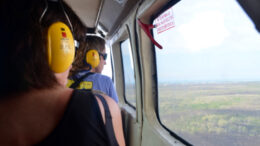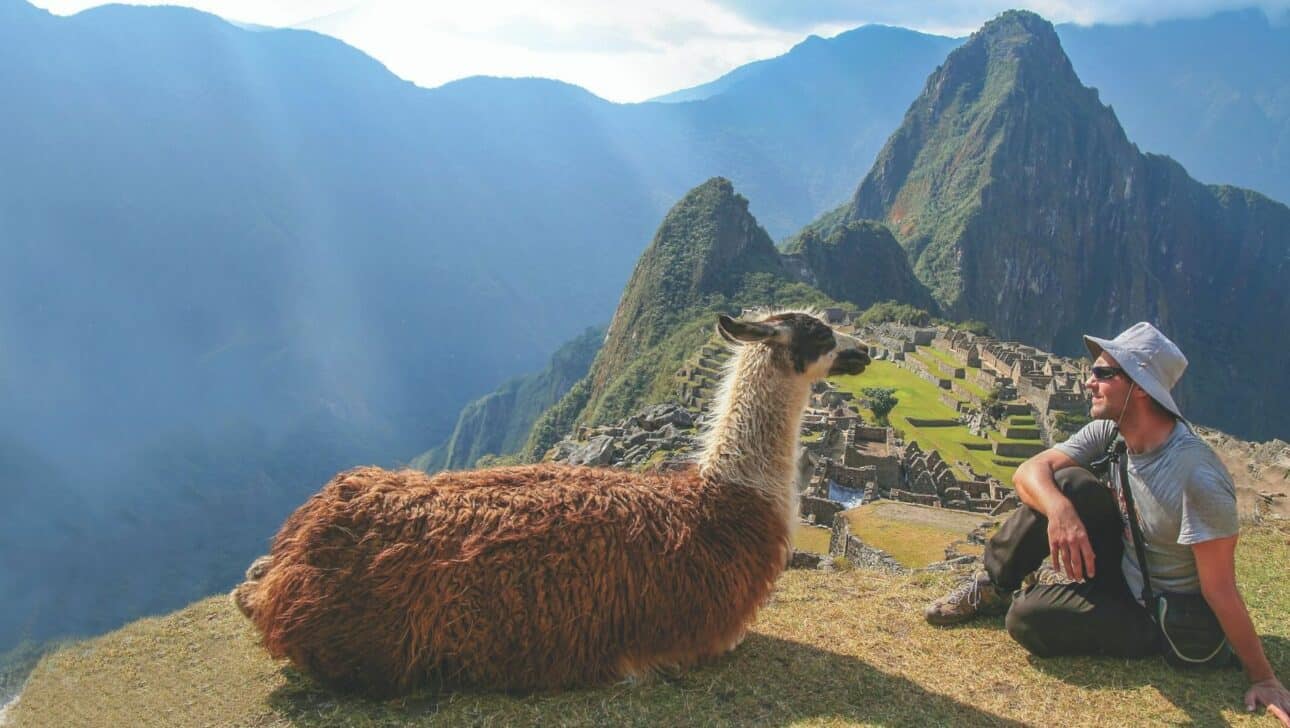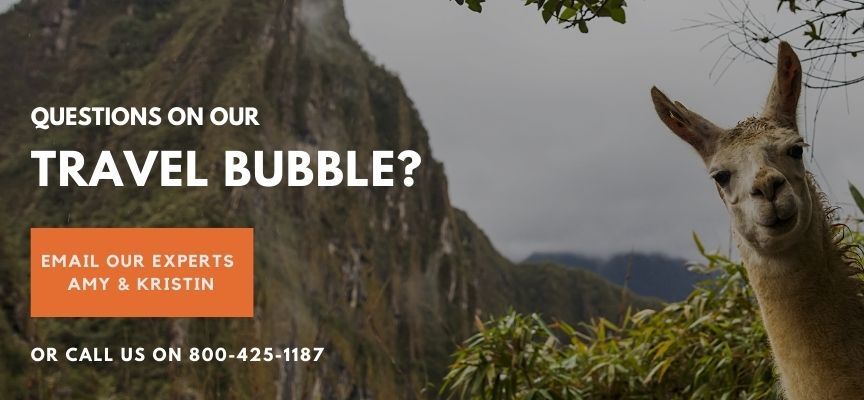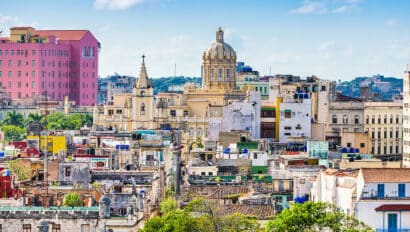Peru has joined the list of international destinations that Americans can visit without having to quarantine.
For an idea of what the new normal will be like for Peru travel, we sat down with Edward Piegza, (Classic Journeys founder), Marisol (our well-connected local guide who leads our ur Culture + Walking and Family trips), and Arturo (our hotelier friend who runs the historic Belmond Monasterio in Cusco).
What is the status of coronavirus in Peru?
Marisol: Peru is in stage 4 of reopening and so we are beginning to see many parts of daily life and travel within the country returning to normal. After peaking in the middle of August, we are seeing a steady decline in the number of cases per day. For example, we are seeing 1,000 fewer daily cases (a 31% decrease) in November compared to October 1.
How do I fly to Peru?
Edward: Americans can fly to Peru from U.S destinations that are less than an eight-hour flight from Lima. These include Los Angeles, New York, Orlando, Miami, Atlanta and Houston.
Flights have also resumed from Canada, Mexico, Central and South America, and the Caribbean.
Do I have to quarantine after entering Peru?
Marisol: No. The government-mandated quarantine in Peru has been cancelled.. This is a result of the number of cases showing a steady decrease. As long as foreign travelers present a valid and negative PCR test, they don’t need to quarantine and they can continue with their travels. Only those who present symptoms related to COVID and test positive have to quarantine.
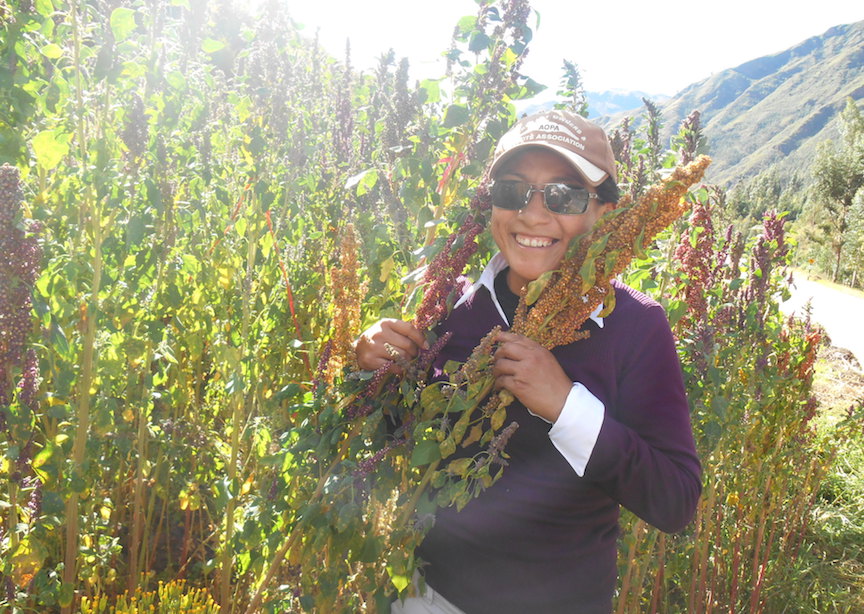
Do I have to take a COVID test to enter Peru?
Edward: Yes. Every traveler must take a RT-PCR test before they enter Peru. They will need to present proof of a negative RT-PCR test result that has been taken within n 72 hours of arrival. You will also need to complete an electronic statement of health within 72 hours of travel. You can do this on your laptop or smartphone through the Peruvian immigration office website: https://e-notificacion.migraciones.gob.pe/dj-salud/
Will I be tested for COVID in Peru’s airports?
Arturo: You will need to be tested at home, before you arrive in Peru’s airports. Officials will check your temperature, sanitize hands and disinfect footwear:
– Before boarding a flight
– Once you arrive to the airport
– Before taking the transportation to your hotel
What measures has Peru tourism put in place for the new normal?
Arturo: Peru has adapted to meet all of the hygiene and biosafety requirements of the Safe Travels Stamp, which is planned in accordance with the World Health Organization (WHO) and awarded by the World Travel & Tourism Council (WTTC). The globally acknowledged stamp is developed to reassure travelers that they can enjoy destinations in confidence. It sets guidelines for restaurants, hotels, attractions, airplanes, airlines, tour guides, vendors, and more. 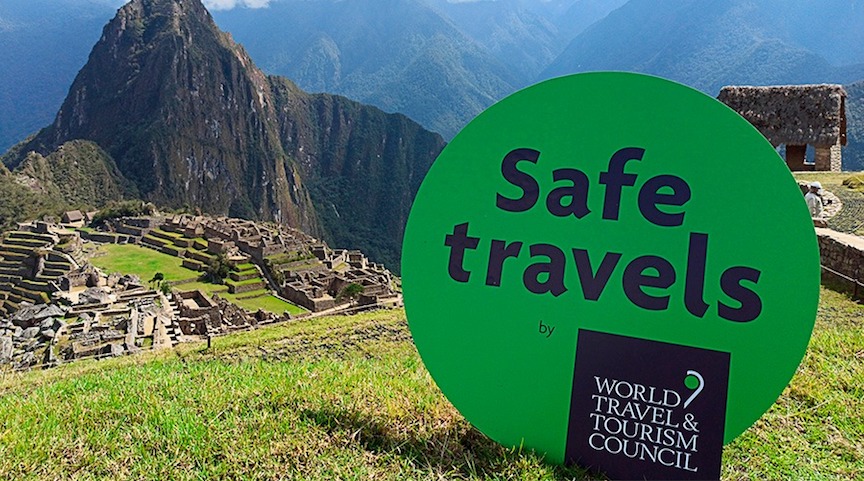
Edward: Classic Journeys is an active member of the Adventure Travel Trade Association. And they reached out to us to vet their COVID guidelines with all of our hotels and guides around the world before they issued them publicly. We, our hotels, guides and the extended Classic Journeys team around the world matched those up with the WTTC Safe Travels guidelines to be sure that everyone bought into them and agreed to them. So guests really have a very good belt and suspenders system in place with safety protocol implemented by the Peruvian government, plus the WTTC and the ATTA.
Do I have to wear a mask all of the time in Peru?
Marisol: Masks are not required in your hotel room or while eating, but they are when you are in public places.
How do you social distance in Peru?
Marisol: Social distancing is very important in public. We are encouraged to stay at least 1 meter apart. The elderly and young children living in Peru are still advised to shelter in place.
Arturo: Capacity is limited to 50% at archaeological sites, restaurants, hotel common areas and other locations. Taxis, buses and trains are operating at 50% capacity, and the distribution of seats is one guest per row, leaving a row between passengers. All transportation has an acrylic partition between the driver and passengers. 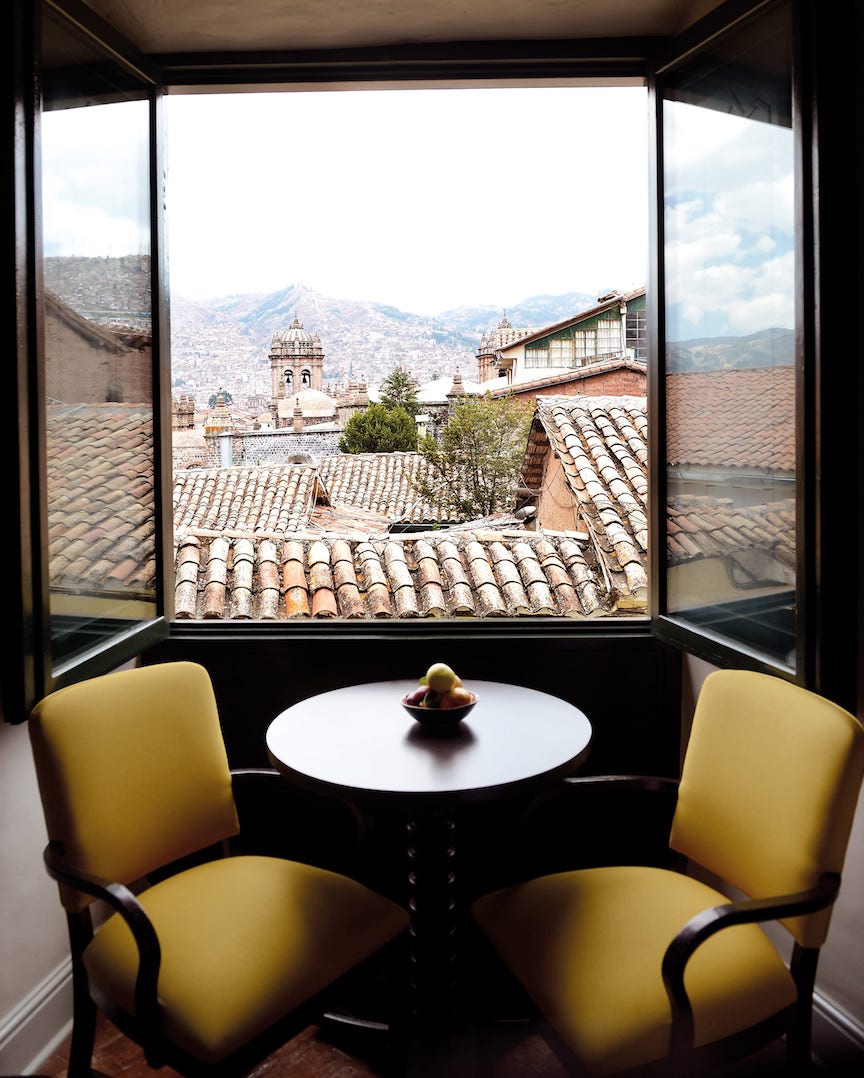
What steps are hotels taking to be COVID-safe in Peru?
Arturo: At Belmond Monasterio, steps taken have taken our already very careful cleaning standards up another notch; including enhancing sanitization, providing antibacterial gel, and temperature checking staff and guests. We have stopped any buffets and self-service dining, and instead expanded outdoor dining and in-room dining. We worked closely with Classic Journeys and followed the WHO and WTTC Safe Travels guidelines, which state a number of protocol that hotels must meet, covering regulations for sanitization, PPE, social distancing, dining and more.
Edward: We created Invisible Check In for Classic Journeys guests a couple of years ago as a means of avoiding waiting in line for check in and having to move our own luggage. Guests loved the special experience and white glove nature of that pre Covid, and of course, now it’s even more important. And it’s an example of things we were already doing pre-COVID that pay real dividends now for our guests.
Does Peru have a travel bubble?
Edward: Yes. Classic Journeys has created a travel bubble in Peru through a comprehensive plan based around a small, tested group of travelers, that is capped at seven plus our local guide and driver. The local guide and driver are key here and an important difference from how most companies operate trips with guides and drivers that are imported to Peru.
All guests arrive with a negative PCR test having been taken within 72 hours of arrival into Peru, and the ability to have a test taken in Peru if they desire. Additionally, your local guide and driver have also taken a PCR test in that time period and received a negative result. Your micro group then stays in Classic Journeys’ preferred boutique hotels that have agreed to abide by not only the Peruvian government’s safety protocols, but in addition those created by the World Travel and Tourism Council (WTTC) and the Adventure Travel Trade Association (ATTA).
In fact, Classic Journeys is an active member of the ATTA and was asked by it to vet the safe travels protocols through our guides, hotels and partners around the world, including in Peru. You can imagine that everyone was very eager to set this benchmark for safety so that travelers could resume exploring with that all important feeling of safety and confidence. 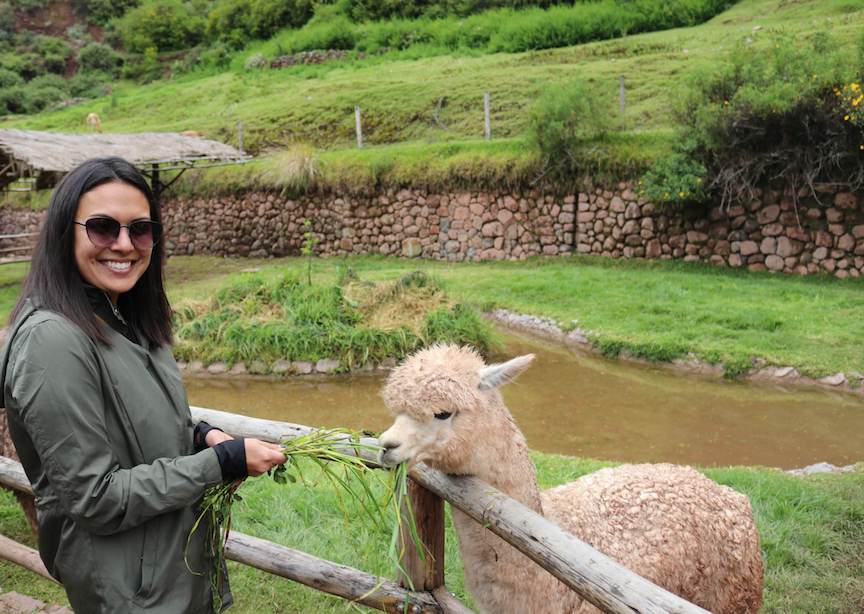
How do you develop a travel bubble?
Edward: To create a travel bubble, we turn to a lot of well-known experts, such as the CDC, the WHO, and the local governments in each of the destinations where we operate trips. Then, Classic Journeys takes it to a whole different level. Because we operate trips in 100 regions in 50 countries on six continents, we are able to see what practices are working best all around the world, benchmark those practices, and employ them immediately in each of our tour regions. We take all of the information we are receiving from our local guides, hotels and colleagues around the world and vet it through a 17x Classic Journeys guest, who is also an infectious disease doctor and the head of that department for one of California’s hospital systems.
As a doctor, mother, wife, and world traveler, she brings a completely unique viewpoint to the #travelsafe and #safetravel mindset. We’ve worked with her closely to develop what she wants to see from a travel protocol and create our travel bubbles.
Will my guide and driver be COVID tested?
Edward: Yes. Your Classic Journeys guide and driver are tested before meeting you at the start of the trip. And since our guests, guides and drivers all have negative PCR tests, they can travel with confidence together in their Classic Journeys travel bubble.
Can I book a tour only with my friends and family?
Edward: Yes! Our private tours allow you to travel just within your household, or form a “vacation bubble” with close friends and family members beyond your household.
What happens if someone in my group becomes ill while in Peru?
Edward: Your guide will ensure they safely and comfortably isolate while a doctor assesses their symptoms and performs any necessary treatment and testing. If they test positve for COVID, comfortable quarantine arrangements will be made, and the rest of the group will be tested and monitored. 
Should a solo traveler feel safe in Peru?
Marisol: Yes. Solo travelers represent about a third of all Classic Journeys guests. Joining a tour like those with Classic Journeys is a very effective way for a solo traveler to explore Peru any time, but especially during COVID. You are automatically part of a bubble where your fellow travelers, guide and driver have all also received negative PCR test results, you take advantage of Classic Journeys Invisible Check In at all hotels, and you know that everyone you’ll interact with on tour has agreed to follow the safe travel protocols of the WTTC and the ATTA.
How long was Machu Picchu closed for because of coronavirus?
Marisol: 8 months! It was the second time we had ever closed, the first time, it was shut for 2 months due to flooding in 2010. Nobody visited. It was like it had been forgotten all over again.
Arturo: There was one, very special visitor before it officially opened. In early October, Peru’s Culture Minister opened Machu Pichu for a Japanese Tourist, he was stranded in Peru after visiting in March, and he had the whole site to himself! How spectacular!
How did Machu Picchu reopen?
Arturo: The Ministers of Tourism and Culture hosted a reopening ceremony at Machu Picchu, which included an Incan ritual thanking the gods, and local artists in national dress who performed cultural expressions of Peru. There was a light show where good wishes from people all over the world were projected onto the walls of Machu Picchu. In the same event, Machu Picchu was awarded its SafeTravels stamp for adapting to sanitization and social distancing procedures amid COVID.
How is Machu Picchu adjusted to social distancing?
Marisol: I personally visited Machu Picchu and the Inca Trail to inspect it and verify all the protocols and new regulations.
Only seven people are permitted per group, plus one guide. Groups must stay a minimum of 66 feet / 20 meters from other groups. Individuals should stay 6 feet / 2 meters apart.
They are staggering entry to nine different time slots per day and there is a one-way circuit system in place, to ensure groups can keep a safe distance from each other.
Some areas, where social distancing cannot be effectively achieved, are temporarily closed. This includes Huaynapicchu mountain, the Temple of the Moon, Inca Bridge and the walk to the Sun Gate.
How can I travel to Machu Picchu?
Marisol: By bus or train. The bus will run with 50% of its capacity and is staggered to depart every 10 minutes, in order to guarantee the social distancing between groups and avoid crowds. The train is also running at 50% of its capacity at reduced frequencies. In both cases, it is mandatory to use a mask and face shield. 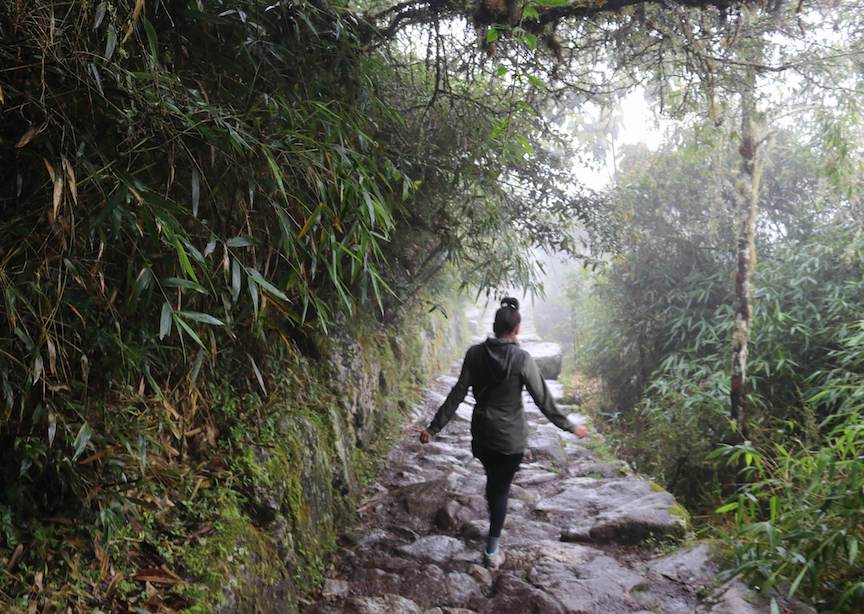
Will I have to wear a mask at Machu Picchu?
Marisol: Yes, PPE is mandatory for all visitors, guides and staff. Guides must ensure all visitors have masks and alcohol gel.
What other safety measures are being practiced at Machu Picchu?
Marisol:
– All surfaces are regularly disinfected, including a specially formulated disinfectant for Machu Picchu itself, that doesn’t harm the materials.
– No surfaces of the historic site can be touched.
– No food is allowed the public transport, or on site.
Do I need a negative COVID test to enter Machu Picchu?
Marisol: You will need the negative test to enter Peru, but to enter the Machu Picchu site. You just have to pass a temperature check. Anyone whose temperature measures above 100.4 (38C), or who is showing any other symptoms such as coughing, will not be permitted. All staff also undergo the same temperature checks at the beginning and end of their shifts.
Is Machu Picchu capacity reduced?
Marisol: Yes, significantly. Visitor numbers will be restricted to about 30%, with a maximum of 675 visitors per day. 75 people will be allowed to enter per hour. For many years before Covid, UNESCO has been concerned about the number of visitors at Machu Picchu and how to mitigate the effects of tourism on the fragile site. So, with the restrictions put in place with Covid, it will be an opportunity to see if this is a new, more sustainable way for tourists to experience this incredible site. Perhaps they will keep it like this!
Edward: The good news is that Classic Journeys guests do not have to worry about tickets or the logistics of visiting Machu Picchu or any of the sites in Peru on the itinerary, as our expert, well-connected local guides take care of all permitting and access for every activity on the itinerary.
Is this a good time to visit Machu Picchu?
Marisol: This is a very unique and special time to visit Machu Picchu. In an article I read, Peru’s Minister of Culture, Alejandro Neyra, emphasized this:
“Nature gives a special life to the sanctuary…One breathes different air, in this environment with fewer people, the feeling is magical and it has its own energy that recharges us. Machupicchu is a world heritage site and therefore we must take special care ”,
Edward: Rarely in life are we given opportunities to see and experince places like they were 50 or 100 years ago. With Machu Picchu having been closed for almost eight months, and now open with very considerable restrictions on number of people who can visit the site per day, the closeness that any one little group of seven people can be to another group (not closer than 66 feet), we all have a special and unique opportunity to experience Machu Picchu much more like right after Hiram Bingham found it than at any point in our lifetime.
Thank you, Edward, Marisol and Arturo!
RELATED ARTICLES:
» Galapagos is open—what you need to know. LEARN MORE
» International destinations you can visit now + how. LEARN MORE
» How to plan a multigenerational trip where everyone feels safe. LEARN MORE
» What states are open. How to access them. How to avoid the crowds. LEARN MORE
